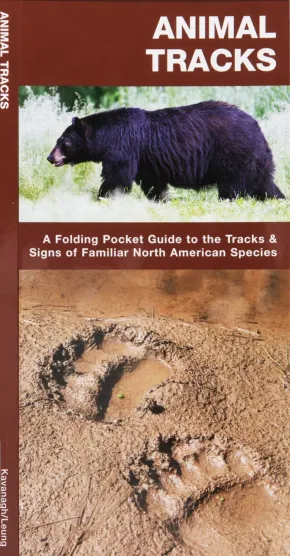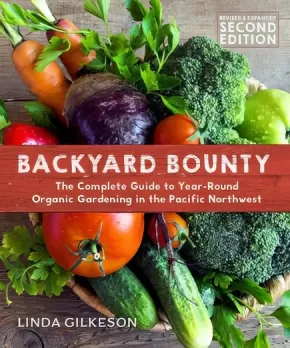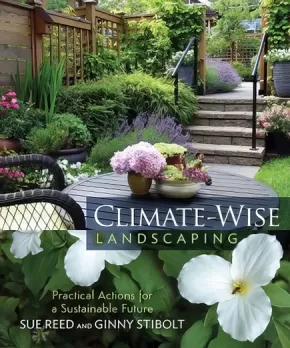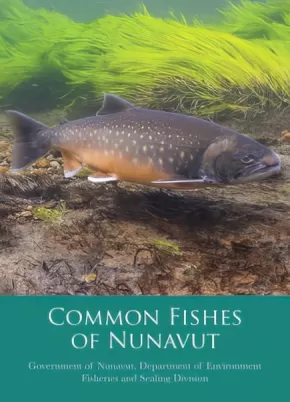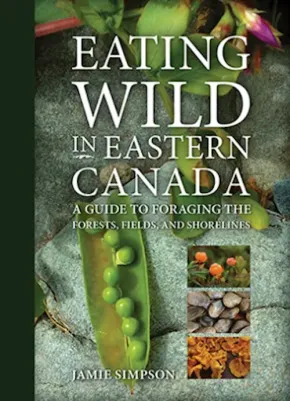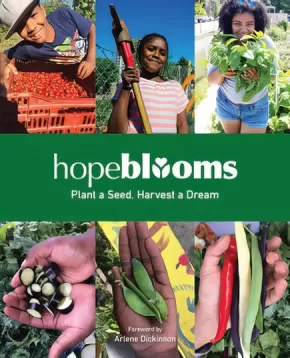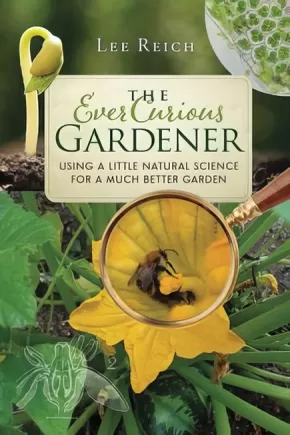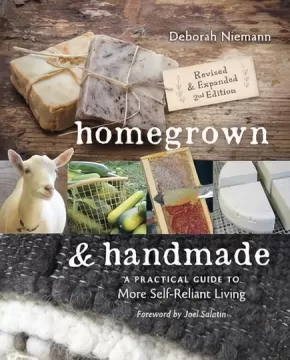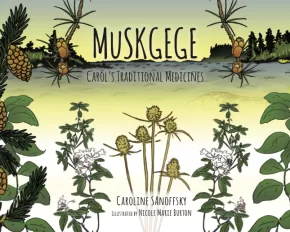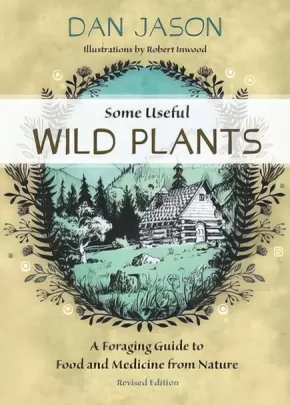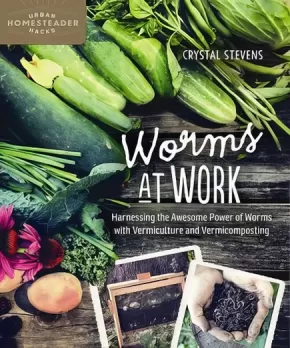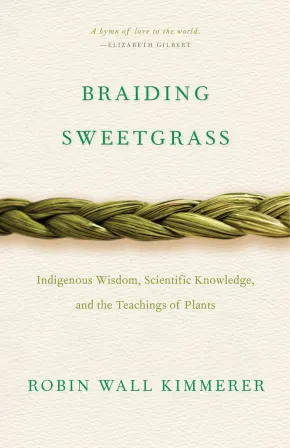Plants and Animals
Synopsis:
Fully illustrated with gorgeous color photographs of the forest and its inhabitants, Among Trees is a lush guided journal that helps you record and reflect on your therapeutic trips into the woods. Use the blank pages to capture the date, season, weather, and location of specific outings. Creative prompts throughout will help you deepen your experience. Inspirational quotes and sidebars on the benefits of forest bathing pepper the pages for added motivation and depth.
Reviews
"[This journal] can help you add this delightful practice to your life and help you experience greater health on all levels.” —New Spirit Journal
Additional Information
224 Pages | 6" x 8.25"
Synopsis:
Animal Tracks provides a simplified field reference to familiar tracks and signs of over 65 North American mammals and birds. Laminated for durability. Features a ruler for measuring animal tracks. It is a great source of portable information and ideal for field use by novices and experts alike.
Additional Information
12 pages | 3.75" x 8.25" | Full Colour
Synopsis:
Grow more food, with less work, in any yard – now completely revised and expanded!
Are you itching to start your own garden or grow more in the one you have, but feel that gardening is too challenging or time-consuming for your busy schedule?
Now completely updated and expanded, Backyard Bounty will demystify gardening, bringing it back to the down-to-earth, environmentally practical activity that anyone can enjoy.
Author and master gardener Linda Gilkeson covers everything you'll need to grow a successful garden, including:
- Planning your garden and preparing the soil
- Organic fertilizers and simplified composting
- Planting for winter harvests and intensive planting schedules
- Comprehensive information on pests, diseases, and working with an unstable climate
- Greenhouses, tunnels and containers
- Organic pest management.
Packed with a wealth of information specific to the Pacific Northwest, this complete guide emphasizes low-maintenance methods, covers problems related to common pests and climate concerns, includes a monthly garden schedule for year-round planting and harvesting, and features plant profiles for everything from apples to zucchini.
Perfect for novice and experienced gardeners alike, Backyard Bounty shows how even the smallest garden can produce a surprising amount of food twelve months of the year.
Reviews
"Backyard Bounty is very likely the best book ever written on growing food in the Pacific Northwest, and it sets a whole new standard for garden writing. By acknowledging the impacts of climate change on our gardens, Gilkeson further elevates the literature. This is the first “real time” gardening book. It is fresh and timely, and every page courses with practical advice and revelations. All growers should own this amazing and insightful book, and we should refer back to it often." —Mark Macdonald, West Coast Seeds
"Ideal for both new and seasoned gardeners, this new edition adds more listings to the detailed fruit and vegetable profiles, updates variety choices, and supplies practical information on dealing with common pests and diseases, including new ones to our region. Tips on adapting gardening practices to changing weather patterns are eminently helpful, as is a focus on the soil as a life force that fosters health in plants." —Helen Chesnut, Garden columnist, Times Colonist
"Whether you have a small or large lot, little or plenty of time, this book shows you how to grow your own toxic-free fruit and vegetables the whole year-round. From preparing the ground to harvesting and storing the ripened produce, all is clearly explained. An invaluable book for novices and experienced gardeners". —Barry Roberts, Past-President, Master Gardeners Association of BC
Additional Information
384 pages | 7.50" x 9.00" | 120 b&w illustrations and photographs
Synopsis:
What can we do, right now, in our own landscapes, to help solve climate change?
Predictions about future effects of climate change range from mild to dire - but we're already seeing warmer winters, hotter summers, and more extreme storms. Proposed solutions often seem expensive and complex, and can leave us as individuals at a loss, wondering what, if anything, can be done.
Sue Reed and Ginny Stibolt offer a rallying cry in response - instead of wringing our hands, let's roll up our sleeves. Based on decades of experience, this book is packed with simple, practical steps anyone can take to beautify any landscape or garden, while helping protect the planet and the species that call it home. Topics include:
- Working actively to shrink our carbon footprint through mindful landscaping and gardening
- Creating cleaner air and water
- Increasing physical comfort during hotter seasons
- Supporting birds, butterflies, pollinators, and other wildlife.
This book is the ideal tool for homeowners, gardeners, and landscape professionals who want to be part of the solution to climate change.
Reviews
"Sue Reed and Ginny Stibolt bring complementary backgrounds to bear on the subject of how we can adapt our landscapes to a changing climate. Starting from the premise that the impacts of climate change will only become more severe in the future, the authors have created a comprehensive book that outlines dozens of actions that people can take to adjust to evolving climate regimes. In the process, they articulate a new gardening aesthetic for people who work with small garden plots, farms and woodlots. The result is a positive and hopeful story of how people can use their imagination and ingenuity to help craft more resilient landscapes." -Dr. Peter Robinson, former CEO, David Suzuki Foundation
"Climate-Wise Landscaping is a comprehensive, yet easy to read, source of information on climate-change adaptation and mitigation actions for the homeowner, gardener, and landscape professional. Beautiful photos and pleasing graphics illustrate key ideas and actions while informative sidebars and inspiring quotes from climate and landscape experts provide clarity of complex systems and motivation to adapt to a changing future. The text provides an engaging blend of broad ideas along with specific actions we can take to adapt to climate-change at the level of our home landscapes, whether a small garden plot within an urban area or twenty acres in the countryside." -Julie Richburg, Ph.D., Ecologist
"Given the lateness of the hour, a book on climate-wise landscaping could not be more timely or more necessary. We are moving into a new and critical era, and this book takes landscape professionals and home gardeners where they need to go. The facts, well-presented and practical, will be an eye-opener for many people, and empower us as horticulturists of all stripes to do what is both helpful and imperative. Landscaping has always been more than just exterior decorating, and now we have one more tool in our kit to make the landscape ecosystem a part of the solution. Thank you, Sue and Ginny, for hitting a home run." -Owen Dell RLA, ASLA, landscape architect, educator, author, Owen Dell & Associates
"Gardening is not always as green and good for the planet as we might think. Sue Reed and Ginny Stibolt open our eyes to surprisingly common, unsustainable landscaping practices and inspire us to rethink how we create and care for land. This fantastic resource is filled with climate-wise solutions for anyone who owns or manages a piece of ground – even if it’s just a few containers on a tiny rooftop garden. You will quickly learn about exiting ways to offset some of the effects we people have on the planet. The book is easy to navigate and it passionately links better gardening practices with better life quality and a brighter future for our planet." -Claudia West ASLA, Principal, PHYTO STUDIO LLC
Additional Information
320 pages | 7.50" x 9.00" | full colour throughout
Synopsis:
Discover the rich and varied world of Nunavut's many fishes in this comprehensive guide.
Covering a broad range of information about Northern fish species, each section includes identification and appearance, habitat and range, relationship to humans, life cycle and reproduction, feeding habits, and other fascinating facts. This book also includes photorealistic illustrations of each species and traditional knowledge about fish collected through interviews with Inuit elders.
Common Fishes of Nunavut will introduce readers to the stunning range of fishes that live in Arctic rivers, lakes, and oceans.
Educator Information
For young adults & adults.
Additional Information
368 pages | 6.50" x 9.00"
Authenticity Note: Because of the contributions from Inuit elders, this book has received the Authentic Indigenous Text label. It is up to readers to determine if this will work as an authentic resource for their purposes.
Synopsis:
From fiddleheads to spruce tips, wild food can be adventurous and fun--with the right guide. In Eating Wild in Eastern Canada, award-winning author and conservationist Jamie Simpson shows readers what to look for in the wilds and how and when to collect it.
Grouping foods by their most likely foraging locations—forests, fields, and shorelines—and with 50 full-colour photographs, identification is made accessible for the amateur hiker, wilderness enthusiast, and foodie alike. Includes historical notes and recipes, cautionary notes on foraged foods' potential dangers, and interviews with wild-edible gatherers and chefs. While gathering wild edibles may be instinctive to some, there is an art to digging for soft-shelled clams and picking highbush cranberries, and Simpson joyfully explores it in this one-of-a-kind narrative guidebook.
Additional Information
152 pages | 6.50" x 9.00" | Paperback
Synopsis:
From sunfish to catfish, there are almost 800 species of freshwater fish in North America. Freshwater Fishes is the ideal pocket-sized, folding guide for the avid angler. This beautifully illustrated guide highlights over 120 familiar species. Laminated and durability, this handy guide will fit into your pocket as you cast your fishing rod into the pristine water.
Additional Information
12 pages | 3.75" x 8.25" | Foldable guide
Synopsis:
There is an old saying that it takes a village to raise a child, but Jessie Jollymore has experienced through the youth of Hope Blooms, an inner-city initiative she founded that engages at-risk youth, that sometimes it takes the children to raise the village. A dietitian who worked in inner city health for 15 years, Jollymore witnessed the challenges people face every day with food security, isolation, discrimination, and poverty. An idea bloomed of creating sustainable, youth-driven micro-economies: growing local food systems, growing social enterprises, and mentoring youth to become leaders of change. This led to over 50 youth ages 6 to 18 leading the way in growing over 3,000 pounds of organic produce yearly for their community, building innovative outdoor classrooms, and building a successful Fresh Herb Dressing social enterprise, with 100% of proceeds going toward growing food, and scholarships for youth.
In this inspiring, vibrant book, the youth behind Hope Blooms tell the story of the social enterprise they built from the soil up, the struggles of "creating something from nothing," successfully navigating the world of business, and ultimately building resilience and leaving behind a legacy. Includes youth's words of wisdom, stories, and poetry, and over 75 colour photos.
Additional Information
180 pages | 7.50" x 9.25"
Synopsis:
Curious why caressing your cucumber plants will help them bear more fruit? Or why you should grow oranges from seed even if the fruit is inedible? Or why trees need to sleep and how to help them?
Join acclaimed gardener, scientist, and author Lee Reich on a journey through the delights of your garden in this laugh-out-loud treatise on the scientific wonders of plants and soil. Offering eye-opening insight and practical guidance, coverage includes:
- How to maximize both flavor and nutrition in your garden bounty
- Helping plants thrive during drought
- Outwitting weeds by understanding their nature
- Making the best use of compost
- Tips on pruning and orchard care
- Why the dead language of Latin can make you a better gardener.
The Ever Curious Gardener is an irreverent romp through the natural science of plants and soil, ideal for newer gardeners moving beyond back-of-the-seed-pack planting to experienced gardeners whose curiosity at the wonders of cultivation grows deeper and stronger with each season.
"Behind the pleasures of the successful garden, there are the apparent mysteries. How does it all work? Curious gardeners have questions and Lee Reich answers them as effectively as that favorite science teacher in school did -- clearly and concisely." - Eliot Coleman
"As an ever-curious gardener who seeks to understand the science behind all things gardening, I look to my horticultural heroes for that. Lee Reich is always one of my top go-to authorities. Much to my delight, and no surprise, this book is everything I was hoping and more. Leave it to Lee to blend science with real-world application, mixed with a chuckle or two throughout the pages. A fresh, fun, and fascinating must-read for every curious gardener." - Joe Lamp’l, Creator & Host, PBS’s Growing a Greener World
"As a commercial grower, I don’t read that many gardening books… although I make an exception for Lee’s Reich books. The Ever Curious Gardener explains some of the science behind what’s going on above ground and below ground in your garden and — most important — how you can work with these natural systems to grow plants that are healthier, more productive, and more attractive. For a better garden and more interesting gardening, read this book." - Jean-Martin Fortier, author, The Market Gardener
"The Ever Curious Gardener is a wise and witty book that offers not just the “how-to” of gardening but also the “how come?” By showing you the science behind growing plants, it gives you the tools to follow Nature’s rules – the only ones that count. What Harold McGee is to the cook, Lee Reich is to the gardener." - Barbara Damrosch, author, The Garden Primer and The Four Season Farm Gardener’s Cookbook
"This is perhaps the most readable gardening book that I have ever encountered. Full of carefully presented garden practices supported by scientific know-how, it's fun and informative -- what more can I say?" - Jeffrey Gillman, Director, UNC Charlotte Botanical Gardens and author, The Truth About Garden Remedies
"The Ever Curious Gardener cultivates curiosity and brings out everyone's inner science nerd. Lee Reich’s engaging and authentic style blend science with practical gardening knowledge. Anyone reading these pages is guaranteed to harvest new, insightful knowledge." - Lisa Kivirist, author, Soil Sisters: A Toolkit for Women Farmers and Homemade for Sale
224 pages | 6.00" x 9.00"
Synopsis:
Food recalls, dubious health claims, scary and shocking ingredients in health and beauty products. Our increasingly industrialized supply system is becoming more difficult to navigate, more frightening, and more frustrating, leaving us feeling stuck choosing in many cases between the lesser of several evils.
Author Deborah Niemann offers healthier, more empowering choices, by showing us how to reclaim links in our food and purchasing chains, to make choices that are healthier for our families, ourselves, and our planet.
In this fully updated and revised edition of Homegrown and Handmade, Deborah shows how making things from scratch and growing some of your own food can help you eliminate artificial ingredients from your diet, reduce your carbon footprint, and create a more authentic life.
Whether your goal is increasing your self-reliance or becoming a full-fledged homesteader, it's packed with answers and solutions to help you rediscover traditional skills, take control of your food from seed to plate, and much more.
This comprehensive guide to food and fiber from scratch proves that attitude and knowledge is more important than acreage. Written from the perspective of a successful, self-taught modern homesteader, this well-illustrated, practical, and accessible manual will appeal to anyone who dreams of a more empowered life.
Additional Information
336 pages | 7.50" x 9.00" | 2nd Edition
Synopsis:
“We are all visitors to this land, our land has so much to offer, our land is overflowing with the medicines our bodies need, but we are only passing through. With respect, our purpose is to watch, to learn, to grow, to love, to teach. Then we will return home.” – Caroline Sanoffsky
Muskgege is a written record of traditional knowledge, passed down through the generations. It features descriptions and illustrations of 36 wild plants that can be used to make medicines. It is a beautiful and compelling reminder of the important role nature plays in First Nations culture.
Educator Information
Grades 6 and under.
Synopsis:
With over forty years since its original printing, and over 30,000 copies sold, this bestselling guide still remains a trusted and much-consulted reference for those interested in identifying, foraging and growing wild plants for food and medicine. Now Some Useful Wild Plants is back in print for a new generation of foragers and herbalists.
Some Useful Wild Plants contains sections on useful herbs, trees, berries and seaweeds, as well as commentary on avoiding poisonous species. Pick the young tender leaves of orach, salsify and miner's lettuce for a delicious and vitamin-rich spring salad or stir-fry. Concoct a cherry bark and licorice fern syrup to soothe a sore throat. Repel insects naturally using sage oil or vanilla leaf. From alder to yarrow, each featured plant has useful descriptors for identification and details on how to harvest, as well as how the plant is traditionally used for medicine by First Nations, pioneers and contemporary herbalists. Clear line drawings are provided to assist foragers in accurate identification. Directions are included for the preparation of ointments, salves, poultices, compresses and tinctures.
Dan Jason also addresses sustainability when foraging to ensure that harvesting supports the continuous growth of the plant and the natural environment.
Reviews
Great for both foragers and growers, the book draws from many sources, including the rich traditions of First Nations healers and Doukhobor wildcrafters, to identify the properties and uses of a wide range of plant life.... For those who feel skeptical about corporate farming and modern society’s mediated relationship with nature, this guide is a breath of fresh air. — Publishers Weekly
Occasional black-and-white illustrations enhance this venerable and practical guide sustainable foraging. From edible wild plants, to natural remedies for common ailments, to poisonous plants that should be meticulously avoided, Some Useful Wild Plants is reader-friendly, practical-minded, and highly recommended. — Midwest Book Review
Additional Information
186 pages | 5.00" x 7.00" | Line drawings | Revised edition
Synopsis:
Fertilize your garden naturally--a guide to growing your plants in healthy, happy soil
People want to know where their food comes from, who grows it and how it is grown. Interest in permaculture, backyard composting, and gardening in general, is growing. So how does the budding gardener ensure that his soil is healthy and nutrient-rich enough to support all the produce he intends to grow? Here's a hint--think worms! Vermiculture is the healthiest and most cost-effective way to ensure that your soil receives the nourishment that it needs. A simple vermicompost bin can produce the completely natural , nutrient-rich fertilizer that can be used to boost soil health and, in turn, increase your crop yield.
In true Crystal Stevens' fashion, Worms at Work is a practical, easy-to-implement guide to fertilizing your garden naturally. It discusses the vital role worms play in boosting soil health, and the reasons why every gardener should use vermicompost in order to decrease reliance on toxic synthetic fertilizers. Coverage includes:
- Simple designs to build your own vermicompost bin
- Caring for your worms
- Garden applications for your worm castings
- Lesson plans to incorporate vermicomposting into the school science curriculum
- Whether you're tending to a small backyard garden or managing a large farm, Worms at Work can show you how to start vermicomposting today in order to grow healthy plants in healthy, happy soil.
Educator & Series Information
Useful for incorporating vermicomposting into the school science curriculum and school gardens.
This book is part of the Homegrown City Life Series:
You’d like to be self-sufficient, but the space you have available is tighter than your budget. If this sounds familiar, the Homegrown City Life series was created just for you! Authors of this series will help you navigate the wide world of homesteading, regardless of how big (or small!) your space and budget may be. Topics range from cheesemaking to gardening and composting—everything the budding urban homesteader needs to succeed!
Increase your self-reliance
- Take back DIY skills
- Work with the space you have, apartment balcony or suburban backyard
- Learn about fermenting, crafting, growing, preserving, and other skills for the urban homesteader.
Additional Information
224 pages | 7.50" x 9.00"
Synopsis:
Would you be surprised if you came face to face with a Drumming Katydid, Red-eared Slider or Brown Bullhead? Would you know what to do if Dalmatian Toadflax or Giant Hogweed landed in your neighbourhood? Alex Van Tol can help. In Aliens Among Us, she identifies more than 50 species of animals and plants that have invaded British Columbia. With the help of colour photographs and illustrations, she exposes the invaders, explains how they got here and what they’re doing to the environment.
In this first-ever children’s book published by the Royal BC Museum, Van Tol has harvested the knowledge of museum biologists to alert the next generation of responsible environmentalists. Her list of serious invaders includes the colourfully named Purple Loosestrife, Violet Tunicate, Eastern Grey Squirrel and Yellow Perch, species that tend to take over an area and crowd out or destroy native species. She names the creatures that can eat their way through an ecosystem, like Smallmouth Bass, Gypsy Moths and American Bullfrogs, as well as vandals like Norway Rats and European Starlings that cause damage to property. And she points out the species that might do serious harm to humans and other animals, such Rockpool Mosquitoes, Giant Hogweed and Poison Hemlock. Some aliens, like European Wall Lizards and Giant Garden Slugs, haven’t yet posed problems in BC, at least not that we’re aware of – but they still need to be watched. And finally, Van Tol raises the alert on species that haven’t yet arrived but may be coming soon, like Northern Snakeheads, Fence Lizards and Zebra Mussels. This readable and alarmingly informative book will help young people prepare for the invasion, and arm them with the tools to stop the spread of unwanted aliens in British Columbia.
Reviews
"Chapters include examples within every class of animal and a selection of herbaceous and woody plants found in BC. One chapter discusses three animals (e.g. zebra mussel) not yet in the province, but likely to appear soon. Another chapter looks at native species (e.g. northern raccoon) that can dominate enough to upset ecology. Finally, the author offers a few examples of aliens that have become so familiar (e.g. cattle) that we forget they are not native here. An important feature is the section “You Can Help” which outlines ways to stop the spread of aliens and urges the reporting of sightings. There’s a Glossary of terms, several pages of scientific names and a useful list of sources, both print and web. The book is packed with concise, intriguing details gathered by the BC author, a former teacher who loves to research. It is published by the Royal BC Museum which attests to its relevancy and accuracy." - CM Magazine, 2016
Additional Information
128 pages | 7.50" x 9.00"
Synopsis:
As a botanist, Robin Wall Kimmerer has been trained to ask questions of nature with the tools of science. As a member of the Citizen Potawatomi Nation, she embraces the notion that plants and animals are our oldest teachers. In Braiding Sweetgrass, Kimmerer brings these two lenses of knowledge together to take us on “a journey that is every bit as mythic as it is scientific, as sacred as it is historical, as clever as it is wise” (Elizabeth Gilbert).
Drawing on her life as an indigenous scientist, and as a woman, Kimmerer shows how other living beings—asters and goldenrod, strawberries and squash, salamanders, algae, and sweetgrass—offer us gifts and lessons, even if we've forgotten how to hear their voices. In reflections that range from the creation of Turtle Island to the forces that threaten its flourishing today, she circles toward a central argument: that the awakening of ecological consciousness requires the acknowledgment and celebration of our reciprocal relationship with the rest of the living world. For only when we can hear the languages of other beings will we be capable of understanding the generosity of the earth, and learn to give our own gifts in return.
Reviews
“Robin Wall Kimmerer has written an extraordinary book, showing how the factual, objective approach of science can be enriched by the ancient knowledge of the indigenous people. It is the way she captures beauty that I love the most—the images of giant cedars and wild strawberries, a forest in the rain and a meadow of fragrant sweetgrass will stay with you long after you read the last page.”— Jane Goodall
"I give daily thanks for Robin Wall Kimmerer for being a font of endless knowledge, both mental and spiritual."— Richard Powers,New York Times
"In a world where only six percent of mammalian biomass on the planet now comprises of wild animals, I longed for books that pressed me up against the inhuman, that connected me to an inhuman world. Braiding Sweetgrass by Robin Wall Kimmerer moved me to actual tears."— Alexandra Kleeman, The Millions
"In Braiding Sweetgrass, botanist Robin Wall Kimmerer tackles everything from sustainable agriculture to pond scum as a reflection of her Potawatomi heritage, which carries a stewardship 'which could not be taken by history: the knowing that we belonged to the land.' . . . It's a book absorbed with the unfolding of the world to observant eyes—that sense of discovery that draws us in."— NPR
“With deep compassion and graceful prose, Robin Wall Kimmerer encourages readers to consider the ways that our lives and language weave through the natural world. A mesmerizing storyteller, she shares legends from her Potawatomi ancestors to illustrate the culture of gratitude in which we all should live.”—Publishers Weekly
“The gift of Robin Wall Kimmerer’s book is that she provides readers the ability to see a very common world in uncommon ways, or, rather, in ways that have been commonly held but have recently been largely discarded. She puts forth the notion that we ought to be interacting in such a way that the land should be thankful for the people.”—Minneapolis Star Tribune
“Braiding Sweetgrass is instructive poetry. Robin Wall Kimmerer has put the spiritual relationship that Chief Seattle called the ‘web of life’ into writing. Industrial societies lack the understanding of the interrelationships that bind all living things—this book fills that void. I encourage one and all to read these instructions.”— Oren Lyons, Faithkeeper, Onondaga Nation and Indigenous Environmental Leader
Additional Information
|


